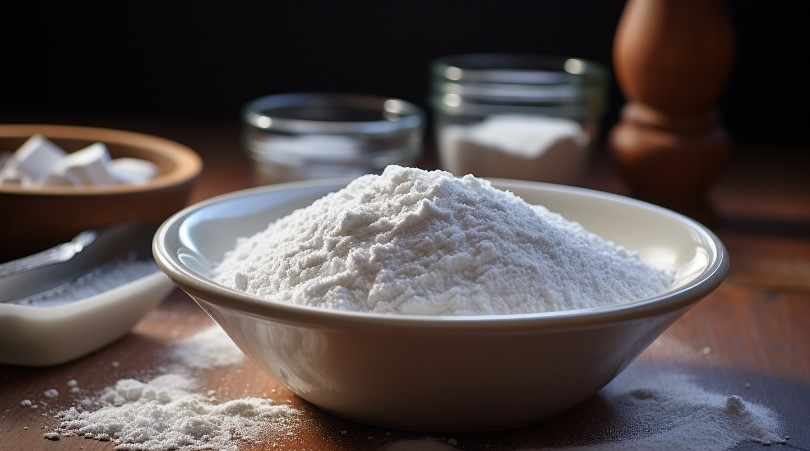Menyerap lebih banyak elemen-elemen ini dan melindungi penglihatan Anda dengan hasil dua kali lipat dengan setengah usaha

After a long time with the eyes, many people will feel the eyes sore, dry, see things become blurred, this time you can do this to relieve eye fatigue.
Every 20 minutes, find something 20 feet away and look at it for 20 seconds, giving your eyes a “mini-vacation.”
Increasing the frequency of blinking can promote the secretion of tears in the eyes, and evenly distribute the tears on the surface of the eye, keeping the eye moist and comfortable.
Located in the inner corner of the eye slightly above the depression. Dry eyes can be effectively improved by pressing both sides with one forefinger and thumb.
According to surveys, the age at which Chinese children suffer from myopia is constantly advancing, and the number of children is increasing. This is not only related to increased study pressure, long hours of watching TV, using computers, playing game consoles, etc., but daily activities also increase the burden on children’s eyes to varying degrees. Children’s poor eyesight is also closely related to unbalanced diet and nutrition.
Lutein
A large amount of lutein accumulates in the yellow spot on the human retina, which is responsible for central vision. Lutein helps protect the eyes from oxidation and high-energy light damage. Many studies have confirmed that lutein intake is directly related to pigmentation in the eyes, and can prevent a variety of eye diseases. Lutein is an element that the human body cannot synthesize by itself and needs to be supplemented by the outside world. Eat more green leafy vegetables, such as spinach, lettuce, broccoli, corn, etc., which all contain lutein.
In the dark green vegetables we often eat, there is such a component, which is called “visual gold” and has a good eye protection effect, that is – lutein.
The recommended intake value of lutein in the Reference Intake of Dietary Nutrients for Chinese Residents is 10 mg per day, and the maximum tolerable intake is 40 mg per day. The body’s need for lutein can be met through dietary supplements. In general, lutein is higher in dark green, yellow and orange vegetables. Some fruits are also rich in lutein, such as mangoes, grapes, oranges and so on.
Zeaxanthin
Zeaxanthin and lutein are isomers of each other. Zeaxanthin mainly exists in the foveal area of the retina, while lutein mainly exists in the peripheral area of the retina. In the fovea of the retina, the concentration of zeaxanthin is twice that of lutein. As the eccentricity from the fovea continues to increase, zeaxanthin will gradually be replaced by lutein and become the most important component in the peripheral area of the retina. Carotenoids. Zeaxanthin is also one of the most important nutrients for the eyes.
Protein
Protein is the basis for vision development. The eyes are one of the important organs of the body. The normal function of the eyes and the renewal of tissues are inseparable from protein. If protein is lacking for a long time, it will cause the function of the eyes to decline, vision to decrease, and various eye diseases to occur. Meat, seafood, milk, eggs, beans, etc. are rich in high-quality protein.
Vitamin A
Vitamin A is the most important nutrient for maintaining normal vision. Strengthening the intake of vitamin A plays a very important role in protecting eyesight. The best sources of vitamin A are the livers of various animals, milk and eggs, as well as red, yellow and dark green vegetables and fruits rich in carotene. An egg a day, one to two cups of milk, a red or yellow vegetable or fruit once a day, and pork liver once a week can effectively prevent vitamin A deficiency.
Vitamin B1
Vitamin B1 is a nutrient for the optic nerve. When it is insufficient, the eyes will easily tire. Vitamin B1 is rich in cereal husks and whole grains such as wheat and beans. In addition, animal offal, lean meat, nuts (such as melon seeds, peanuts) are also rich in vitamin B1.
Vitamin B2
Vitamin B2 ensures normal metabolism of the retina and cornea. Lack of vitamin B2 can easily cause symptoms such as tearing, red eyes, itching, and eye spasms. Vitamin B2 is most abundant in meat, fish, egg yolks, and milk.
Vitamin C
Vitamin C is one of the components that make up the lens of the eye. Lack of vitamin C can easily cause crystal opacity. Foods rich in vitamin C include a variety of fresh vegetables and fruits. Among them, green peppers, cucumbers, cauliflower, cabbage, fresh dates, pears, oranges, grapefruit and other foods have higher vitamin C content.
Selenium
Selenium is extremely important for the function of the visual organ. Selenium is required to control the contraction of eyeball movement muscles, the expansion and contraction of pupils, and to maintain normal eye color discrimination. Selenium is also one of the important components of a non-specific antioxidant (glutathione peroxidase) in the body, and this substance can remove peroxides and free radicals in the human body (including the eyes), making the eyes immune damaged. Therefore, attention should be paid to selenium supplementation in daily meals. For example, eating animal liver, lean meat, corn, onions, garlic, oysters, fish, and mussels in large amounts can increase selenium intake.
lutein Supplier ,Zeaxanthin supplier,Vitamin B1 supplier,Vitamin B2 supplier,Vitamin C supplier,: www.backvita.com
Email: [email protected]
Telepon +86 (029) 8187 2325
